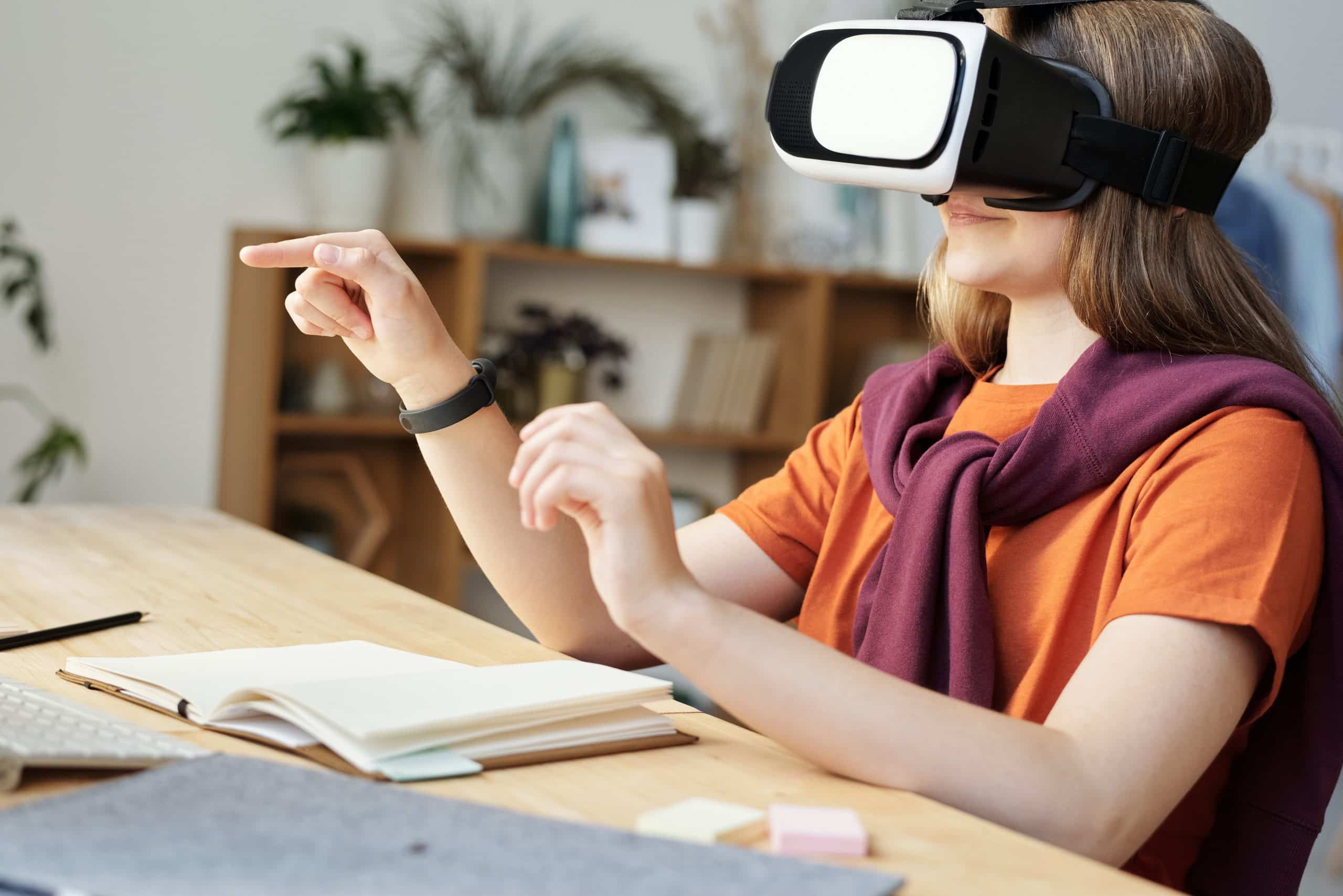Virtual reality for historical preservation and education

Imagine being able to walk through the streets of ancient Rome, explore the hallways of a medieval castle, or stand in the trenches of World War I. What if you could do all of this from the comfort of your own home? No time machines necessary, no costly travels or risks of damaging delicate historical sites. This is the promise of virtual reality (VR), a revolutionary technology that is transforming the way we access and experience our cultural heritage.
Harnessing The Power of Virtual Reality for Cultural Preservation
The preservation of our world’s cultural and historical heritage is an ongoing challenge. In the past, preservation has been limited to physical techniques such as preservation, restoration, and documentation. However, these methods can be costly, time-consuming, and often fall short in conveying the full depth and richness of our past.
Additional reading : How Is Biotech Innovating in Allergy Detection?
Digital technologies, and in particular virtual reality, are now offering new possibilities for preserving and experiencing our cultural heritage in ways that were previously unimaginable. With VR, we can create immersive experiences that transport users to historical sites and times, giving them a deeper understanding and appreciation of our shared past.
These virtual experiences are not only entertaining, they are also powerful educational tools. Through VR, students can interact with history in a much more meaningful way than through traditional textbooks or lectures. They can see, hear, and even touch the past, making history come alive in a way that is both memorable and engaging.
Additional reading : Everything you need to know about MyImageGPT in the era of Artificial Intelligence
Digital Preservation Projects in Action
There are already many inspiring examples of how VR is being used to preserve and share our cultural heritage. Google’s Open Heritage project, for instance, is using advanced 3D scanning technology to create detailed digital models of endangered historical sites from around the world. These models can then be viewed and explored in virtual reality, allowing users to virtually visit these sites even if they are inaccessible or destroyed in the real world.
Another notable project is the Virtual Reality Rome Reborn project, which uses VR to recreate the city of Rome as it was in AD 320. The project allows users to explore the city’s streets, buildings, and landmarks in full 3D detail, guided by a virtual tour guide.
These projects illustrate the power of VR to not only preserve our cultural heritage but also make it more accessible and engaging for a wide audience.
Virtual Reality Applications for Historic Education
Beyond preservation, virtual reality also holds great potential for enhancing historical education. Traditional methods of teaching history often rely heavily on reading and memorization, which can be dry and uninspiring for many students. VR, on the other hand, delivers an immersive, interactive experience that can make learning history much more engaging and memorable.
For instance, the World War I Virtual Reality Experience developed by the Smithsonian’s National Air and Space Museum, allows users to experience life in the trenches of World War I. Similarly, the Anne Frank House VR project enables users to explore the secret annex where Anne Frank and her family hid during World War II, adding a level of realism and emotional engagement that traditional teaching methods cannot match.
The Future of Virtual Reality and Cultural Heritage
As virtual reality technology continues to advance, its potential applications for cultural heritage and historical education will only increase. With better graphics, more realistic simulations, and more sophisticated data collection and analysis capabilities, VR will provide even more immersive and meaningful experiences of our cultural heritage.
Moreover, as VR becomes more widespread and affordable, it will become more accessible to a broader audience. This means that more people will be able to experience the rich tapestry of our world’s cultural heritage, regardless of their location or mobility.
However, as we embrace this exciting future, it is essential to remember that virtual experiences should not replace physical preservation efforts. While VR technology can create stunning simulations, it can never fully capture the tangible, tactile experience of a physical site. Therefore, it is crucial to continue investing in traditional preservation methods, while leveraging digital technologies like VR to enhance and augment these efforts.
Virtual Reality: A New Era of Heritage Preservation and Education
Virtual reality is revolutionizing the way we preserve and experience our cultural heritage. By creating immersive, interactive experiences, VR allows us to explore historical sites and periods in a way that is not only engaging and educational but also preserves these precious sites for future generations.
While we are still in the early stages of this digital revolution, the potential of virtual reality for cultural heritage and historical education is undeniable. As we continue to improve and refine this technology, we can look forward to a future where everyone, regardless of their location or circumstances, can explore and learn from our shared cultural heritage.
Augmented Reality Enhancing Historical Preservation
While virtual reality offers a fully immersive experience, augmented reality (AR) is also playing a major role in historical preservation. In contrast to VR, AR overlays digital information onto the real world, adding an extra layer of interactive content that enhances our understanding and appreciation of historical sites.
Google Scholar and other research institutions have been developing AR applications that breathe new life into cultural heritage sites. For instance, through AR, visitors at a museum can point their smartphones at an artifact and see additional information, such as its age, origin, or how it was used in the past. In some cases, AR can even bring a static display to life, animating it or showing how it would have looked in its original context.
Similarly, AR can be used outdoors to enrich the experience of visiting historical sites. By overlaying high-resolution computer vision graphics onto the real-world view, AR applications can show how a ruin, for instance, would have originally looked, or provide a 3D reconstruction of a long-gone building or structure. This fusion of the physical and digital worlds creates a unique and engaging learning experience that deepens our connection with our cultural heritage.
However, the role of AR extends beyond providing interactive virtual tours. Through high fidelity laser scanning and artificial intelligence, we can create detailed digital archives of historical sites and artifacts. This not only aids in their preservation but also opens up new possibilities for research and scholarly study.
The Role of Digital Archiving in Safeguarding Cultural Heritage
Digital archiving plays a pivotal role in safeguarding our cultural heritage. By creating high-resolution digital replicas of historical artifacts and sites, we can ensure their preservation, even in the face of potential threats such as environmental damage, war, or urban development.
Advanced technologies such as 3D laser scanning and photogrammetry enable us to capture minute details with incredible precision. These digital records can then be used for a variety of purposes, from facilitating archaeological research to creating fully immersive VR or AR experiences.
For instance, the CyArk project, in partnership with Google’s Arts and Culture division, is using these technologies to create detailed 3D models of threatened heritage sites around the world. These digital archives are not only invaluable for preservation purposes, but they also provide the foundation for creating virtual museums and educational experiences, making our cultural heritage accessible to people regardless of their physical location.
In addition to preserving physical structures, digital archiving can also safeguard intangible cultural heritage, such as traditional dances, music, or oral histories. Using high-definition audio and video recording, these aspects of our cultural heritage can be faithfully preserved and shared with future generations.
Conclusion
As we venture further into the digital age, the fusion of cultural heritage preservation and technological innovation is opening up new horizons for both education and preservation. Virtual reality and augmented reality platforms, along with advancements in digital archiving, are not only keeping our past alive but also bringing it to our fingertips.
Yet, it is essential to remember that while technology can create stunning visualizations and immersive experiences, it can never replace the authenticity and emotional resonance of physical sites. As such, preserving our world’s cultural heritage must be a dual endeavor, combining traditional conservation efforts with these innovative digital approaches.
Looking ahead, we can expect to see these technologies becoming even more integral to our understanding and appreciation of our shared cultural heritage. As we continue to refine and advance these tools, we stand to gain a richer, more vivid, and more meaningful connection with our collective past. And in doing so, we ensure that our cultural heritage continues to enlighten and inspire future generations.
